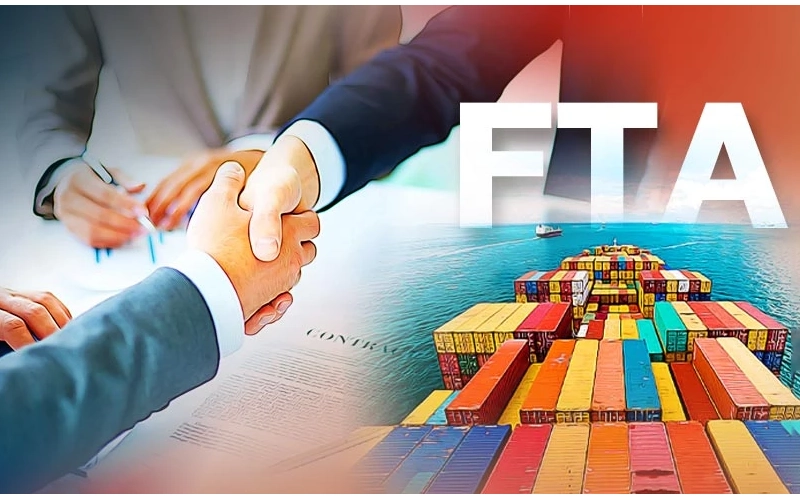India’s Textile & Apparel (T&A) industry has long been the backbone of our export economy, contributing significantly to employment, GDP, and foreign exchange. With a robust ecosystem that stretches from cotton farms to high-fashion retail, the sector holds immense potential. The Indian government has done well to support it through Free Trade Agreements (FTAs), tax rebates, and ambitious schemes like PLI and PM-MITRA. Yet, a critical question remains: Are incentives and trade deals enough to secure the industry’s future in an intensely competitive global market?
The Present: Riding on Incentives India’s policy framework for textiles is arguably more comprehensive than ever. The RoSCTL and RoDTEP schemes ensure Indian exporters remain competitive by offsetting embedded taxes. FTAs with UAE, Australia, and the EFTA bloc have opened new market avenues. Initiatives like the PLI scheme aim to boost large-scale manufacturing, especially in man-made fibres (MMF) and technical textiles. The PM MITRA Parks are envisioned as integrated hubs that promote investment, infrastructure, and employment.
But even with these, India’s global market share in textiles stands at just 3.91%. We are the sixth-largest exporter, but we are losing pace to smaller nations like Bangladesh and Vietnam in terms of speed, flexibility, and responsiveness.
The Real Game Changers
To truly future-proof India’s T&A sector, we must move beyond incentives and towards systemic transformation:
- Supply Chain Agility: Digitize and integrate supply chains across the country. Encourage nearshoring models, responsive manufacturing, and real-time order tracking to reduce lead times.
- Brand India Movement: Just as “Made in Italy” and “Made in Turkey” have come to stand for quality and design, India needs to build a global brand rooted in sustainability, craftsmanship, and innovation.
- Tech Integration: From 3D design and sampling to AI-driven demand forecasting, fashion tech must be embraced at all levels—not just by large players but also MSMEs.
- Design-Led Manufacturing: India should evolve from being a contract manufacturer to a co-creation hub. Support homegrown design talent and incentivize R&D to develop export-worthy original collections.
- MSME Upgradation Fund: A revamped TUFS 2.0 could focus on digitization, ESG compliance, and machinery modernization specifically tailored for MSMEs.
A Shared Vision for a Resilient Future
The government has laid the foundation. Now it is time for industry stakeholders—manufacturers, exporters, technologists, investors, and policymakers—to collaborate in building the future. It is not just about policy support anymore; it’s about creating an ecosystem that can withstand global shocks, respond to dynamic trends, and lead the next chapter in textile innovation.
What’s Missing or Still Weak
- Lack of Deep Infrastructure Reform
- PM MITRA parks are a step forward, but actual implementation and industry participation will determine success.
- Many units are still battling high logistics cost, fragmented value chains, and lack of plug-and-play ecosystems.
- Low Productivity & Skilling Gaps
- SAMARTH and skill development initiatives exist but are yet to create industry-wide transformation.
- Technological obsolescence and low automation in MSME units drag efficiency.
- MMF Ecosystem Still Evolving
- India is trying to pivot from cotton to MMF (which dominates global demand), but it lacks global-scale MMF supply chains, R&D investment, and tech upgradation.
- Raw material pricing remains volatile and uncompetitive compared to China.
- Compliance & ESG Challenges
- Increasing buyer focus on sustainability, traceability, and ethical sourcing.
- Many Indian manufacturers struggle to meet ESG benchmarks, especially in MSME clusters.
- Slow FTA Negotiations
- While some FTAs have been signed, India-EU and India-UK FTAs are still under negotiation.
- Time-sensitive nature of fashion and textiles means delays can hurt competitiveness.
What More is Needed?
- End-to-End Digitized Supply Chains
– For agility, traceability, and cost-efficiency. - Brand India Push for T&A
– Create a global identity like “Made in Bangladesh” or “Made in Italy.” - Technology Upgradation Fund 2.0
– A new-age TUFS that helps MSMEs adopt automation, AI, and ESG compliance tools. - Faster Implementation of FTAs & QCOs
– Execution needs to match ambition. - Handlooms & Handicrafts Integration
– Bring artisans into the global fashion ecosystem via tech, e-commerce, and design-led collaborations.

